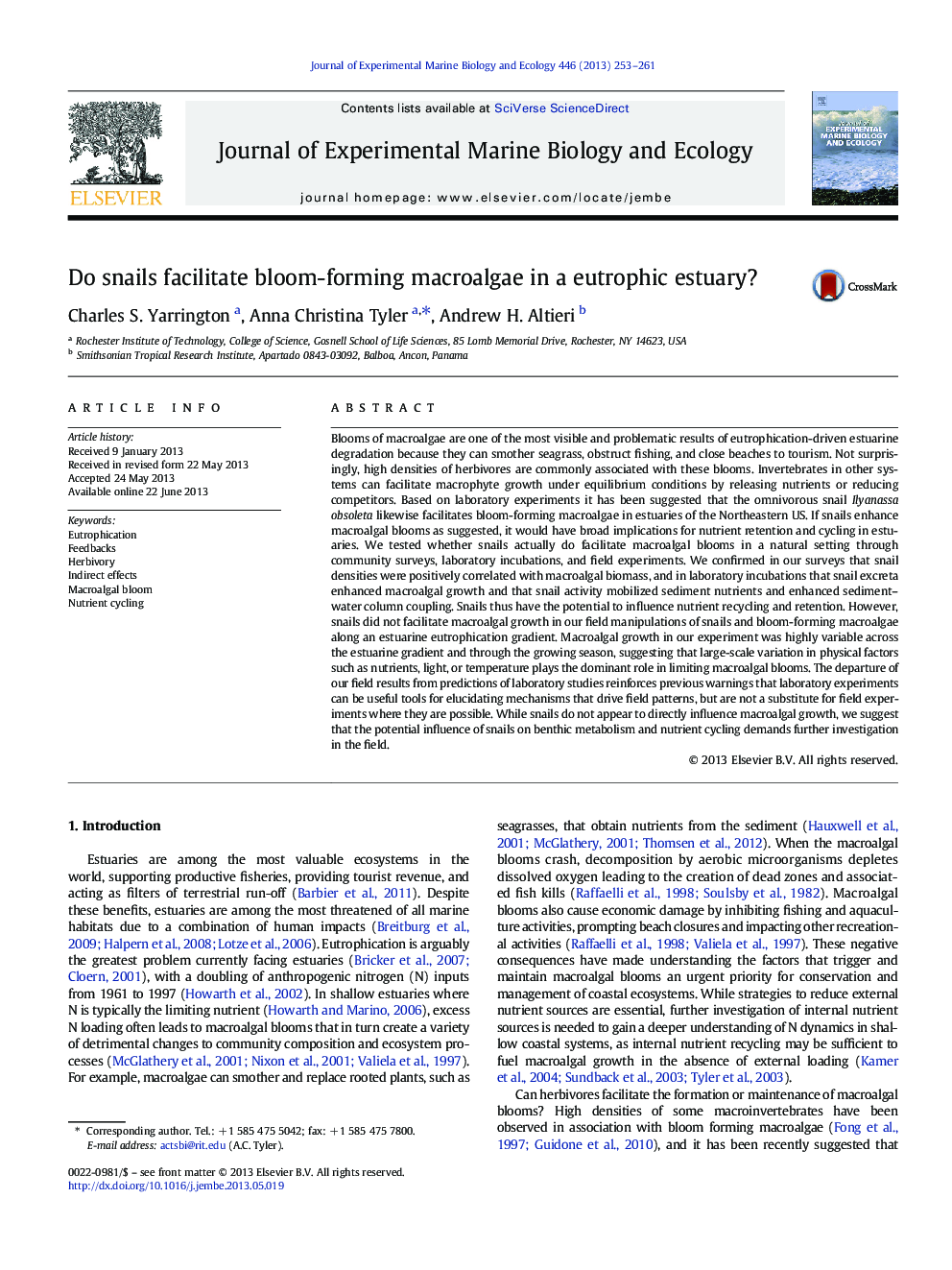| کد مقاله | کد نشریه | سال انتشار | مقاله انگلیسی | نسخه تمام متن |
|---|---|---|---|---|
| 4395729 | 1618429 | 2013 | 9 صفحه PDF | دانلود رایگان |

• We experimentally examined facilitation of macroalgae by Ilyanassa obsoleta.
• I. obsoleta promotes nutrient availability through bioturbation and excretion.
• No effect of snails on Ulva growth was observed in the field.
• Factors other than nutrients likely control blooms of Ulva sp. in natural settings.
• Laboratory experiments may compliment but not substitute for field experiments.
Blooms of macroalgae are one of the most visible and problematic results of eutrophication-driven estuarine degradation because they can smother seagrass, obstruct fishing, and close beaches to tourism. Not surprisingly, high densities of herbivores are commonly associated with these blooms. Invertebrates in other systems can facilitate macrophyte growth under equilibrium conditions by releasing nutrients or reducing competitors. Based on laboratory experiments it has been suggested that the omnivorous snail Ilyanassa obsoleta likewise facilitates bloom-forming macroalgae in estuaries of the Northeastern US. If snails enhance macroalgal blooms as suggested, it would have broad implications for nutrient retention and cycling in estuaries. We tested whether snails actually do facilitate macroalgal blooms in a natural setting through community surveys, laboratory incubations, and field experiments. We confirmed in our surveys that snail densities were positively correlated with macroalgal biomass, and in laboratory incubations that snail excreta enhanced macroalgal growth and that snail activity mobilized sediment nutrients and enhanced sediment–water column coupling. Snails thus have the potential to influence nutrient recycling and retention. However, snails did not facilitate macroalgal growth in our field manipulations of snails and bloom-forming macroalgae along an estuarine eutrophication gradient. Macroalgal growth in our experiment was highly variable across the estuarine gradient and through the growing season, suggesting that large-scale variation in physical factors such as nutrients, light, or temperature plays the dominant role in limiting macroalgal blooms. The departure of our field results from predictions of laboratory studies reinforces previous warnings that laboratory experiments can be useful tools for elucidating mechanisms that drive field patterns, but are not a substitute for field experiments where they are possible. While snails do not appear to directly influence macroalgal growth, we suggest that the potential influence of snails on benthic metabolism and nutrient cycling demands further investigation in the field.
Journal: Journal of Experimental Marine Biology and Ecology - Volume 446, August 2013, Pages 253–261